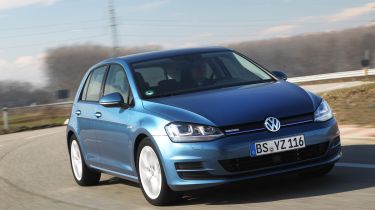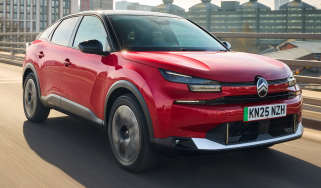Volkswagen Golf 2.0 TDI GT
New Mk7 hatch raises the bar again. But is it a class leader?
We were expecting the new Golf to be good, and it hasn’t disappointed. It looks sharper than before, has a roomier interior and is amazingly refined. Strengthening its case are low running costs, brisk performance and the hi-tech safety kit. There really are no chinks in its armour.
This is the car that the current crop of compact family hatchback contenders has been dreading: the VW Golf Mk7.
The new model is based on the same lightweight MQB structure as the recently launched Audi A3. It promises to be not only bigger, faster and more refined than the car it replaces, but also cleaner and more efficient. Plus, the latest Golf comes packed with a raft of industry-leading safety equipment.
While the all-new underpinnings are technologically advanced, Volkswagen has played it safe with the styling. The seventh-generation car looks slightly sleeker and sportier than before, but trademark cues like the upright tail and thick C-pillar mean that you could never mistake this for anything other than a Golf.
Neat additions include an extended chrome grille strip that runs into the headlamps, while our range-topping GT test car benefited from standard-fit 17-inch alloys, privacy glass for the rear windows and extra chrome trim.
Used - available now
Any lingering disappointment about the styling will be banished as soon as you climb aboard. With its first rate-finish, top-notch materials and slick design, the Golf edges ahead of the BMW for upmarket appeal, and is head and shoulders above the Ford.
The clearly laid-out dash is angled towards the driver and is packed with switchgear that operates with crisp precision, while there’s loads of wheel and seat adjustment, so it’s a doddle to find a comfortable driving position.
There are plenty of gadgets to play with, too, as all models in the line-up get Bluetooth, a DAB radio and a brilliantly user-friendly 5.8-inch infotainment touchscreen. Better still, SE and GT versions have a whole host of desirable big car kit, including adaptive cruise control and a City Safe collision mitigation set-up. Add this technology to the Ford, and you’ll have to shell out an extra £1,600.
The VW stretches its advantage when it comes to practicality, as the cabin is even bigger than before. Occupants in the back get slightly more head and legroom than those in the Ford Focus, while the larger windows help create a more airy feel inside.
There’s also plenty of storage for odds and ends, including a vast glovebox, a lidded centre console cubby and deep door pockets that are flock lined to stop loose change and keys rattling around on the move.
As before, the large VW badge on the boot doubles as the release for the tailgate. Under this is a 380-litre load bay – that’s 20 litres up on the BMW’s. Fold the split/fold rear bench and the volume rises to a useful 1,270 litres.
The Golf continued its onslaught on the track. Not only was the 148bhp 2.0-litre diesel the most powerful engine here, the new car is the lightest on test, weighing in at 1,354kg. As a result, it was faster than both rivals from 0-60mph, with a time of 8.8 seconds. The VW extended its advantage in our in-gear tests, plus in the real world it felt gutsier and more responsive than either of the other cars here.
As in the 1 Series, drivers can alter the steering weight and throttle response in the Golf to suit their mood and the road conditions. Yet while the steering is precise, grip is strong and body control second to none, the new VW isn’t quite as engaging as the agile Ford and rear-wheel-drive BMW. Still, the margins are very narrow, and the Golf’s class-leading refinement makes any disappointment short-lived.
The diesel is smooth, while there’s barely any wind and road noise. However, it’s worth noting that our car was also fitted with the excellent £795 Adaptive Chassis Control dampers, which deliver an amazingly supple ride.
At £23,465, the Golf is the most expensive choice in this test, although it offsets this price premium with that long list of kit. As ever, it’ll hold on to its price really well, too, while CO2 emissions of 106g/km make it a cost-effective company car choice.
Besides, if our high-spec GT looks costly, the range starts from £16,285 for a 1.2 TSI S – so there should be a Golf for every budget.
On this evidence, the VW looks set to regain its place at the top of the family hatch tree.













